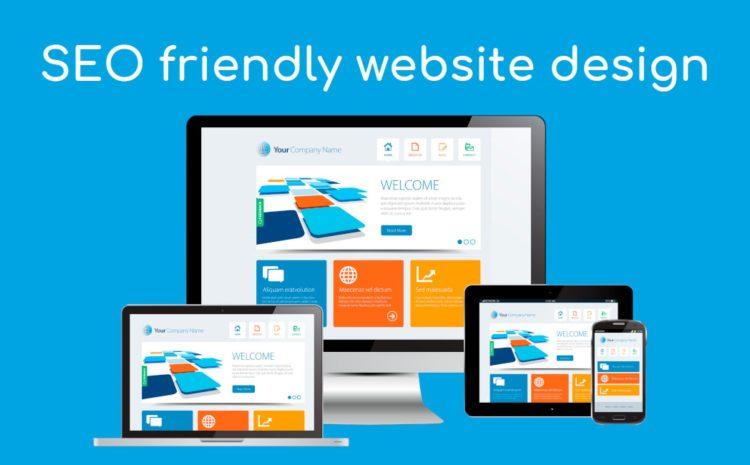How to Design an SEO-Friendly Website: The Ultimate Guide for 2024
Designing an SEO-friendly website is essential in today’s digital landscape. Whether you’re building a blog, e-commerce store, or corporate site, ensuring your website follows SEO best practices can dramatically improve your visibility on search engines like Google. In this comprehensive guide, we’ll cover everything you need to know about how to design an SEO-friendly website, from foundational principles to practical tips and technical strategies that boost your organic traffic and user experience.
Why Is Designing an SEO-Friendly Website Important?
SEO (Search Engine Optimization) determines how easily search engines can discover and rank your website pages. A well-designed, SEO-optimized website enhances crawlability, loads faster, and provides users with a seamless browsing experience-all of which contribute directly to higher search engine rankings and improved conversion rates.
- Higher search rankings: Google favors websites that follow SEO best practices, driving organic traffic and visibility.
- Better user experience: SEO-friendly websites are intuitive and mobile-responsive, encouraging visitor engagement.
- Increased site speed: Optimization leads to faster load times, reducing bounce rates.
- Easier website maintenance: SEO-friendly architecture helps with scalable content updates and technical troubleshooting.
Core Principles to Design an SEO-Friendly Website
1. Responsive and Mobile-First Design
With over half of all web traffic coming from mobile devices, a responsive design that automatically adapts to any screen size is crucial. Search engines prioritize mobile-friendly sites in their ranking algorithms.
2. Fast Loading Speeds
Speed matters. Optimize images, use browser caching, minify CSS/JS files, and choose reliable hosting to reduce page load times. Tools like Google PageSpeed Insights help identify improvements.
3. Clean and Intuitive URL Structure
URLs should be descriptive and human-readable, incorporating relevant keywords without unnecessary parameters or special characters. A logical hierarchy helps both users and search engines understand your website structure.
4. Easy Navigation and Site Architecture
Design your website navigation to be simple and consistent. Use clear menu labels, breadcrumbs, and a sitemap to help users and search engines discover your content efficiently.
5. Keyword Integration in Content and Design
Before designing, conduct keyword research to understand what terms your audience is searching for. Integrate these keywords naturally in headings, meta tags, image alt texts, and body content without keyword stuffing.
Practical Tips to Enhance Website SEO Through Design
- Use semantic HTML5 tags: Elements like
, and - Optimize images: Compress images and use descriptive
altattributes with keywords relevant to the page. - Include internal linking: Strategically link between relevant pages to distribute “link juice” and improve crawlability.
- Implement schema markup: Structured data helps search engines better understand your content and enhances rich snippets.
- Ensure secure browsing (HTTPS): HTTPS is a ranking factor; secure your site with a valid SSL certificate.
SEO Website Design Checklist
| SEO Aspect | Design Requirement | Benefit |
|---|---|---|
| Mobile Responsiveness | Design with flexible grids and media queries | Better UX and higher rankings on mobile |
| Page Speed | Optimize assets; use caching & CDN | Reduced bounce rates and improved user retention |
| URL Structure | Short, descriptive URLs with keywords | Easier indexing and keyword relevance |
| Content Layout | Use headings (H1, H2, H3) and paragraphs | Improved readability and content hierarchy |
| Security | Implement HTTPS with SSL | Trustworthiness; SEO ranking factor |
Common Mistakes to Avoid When Designing an SEO-Friendly Website
- Ignoring Mobile Optimization: Desktop-only designs lose massive traffic and rankings.
- Overloading Pages With Heavy Media: Large images and videos without optimization slow sites down.
- Duplicate Content & URL Parameters: Confusing Google with identical or near-identical content can hurt rankings.
- Poor Navigation: Complex menus and hidden pages frustrate users and search bots alike.
- Neglecting Metadata: Missing or generic meta titles and descriptions diminish click-through rates.
Case Study: SEO-Friendly Redesign for an E-commerce Brand
A popular online retailer revamped their website focusing on SEO-friendly design principles. By improving site speed, adopting a mobile-first approach, and restructuring URLs, they achieved:
- 25% faster load times
- 40% increase in organic traffic in 6 months
- Significant improvement in user engagement and time on site
This highlights the importance of SEO in web design and how it directly impacts conversions.
Conclusion: Your SEO-Friendly Website Starts With Thoughtful Design
Designing a website that ranks well on search engines isn’t just about great content-it’s about creating an optimized, user-friendly foundation that search engines love to crawl. By focusing on responsive design, fast performance, clean URLs, easy navigation, and keyword integration, you can build an SEO-friendly website that drives traffic, improves conversions, and grows your business in 2024 and beyond.
Start designing your SEO-friendly website today by applying these tested strategies and best practices, and watch your online presence soar!











